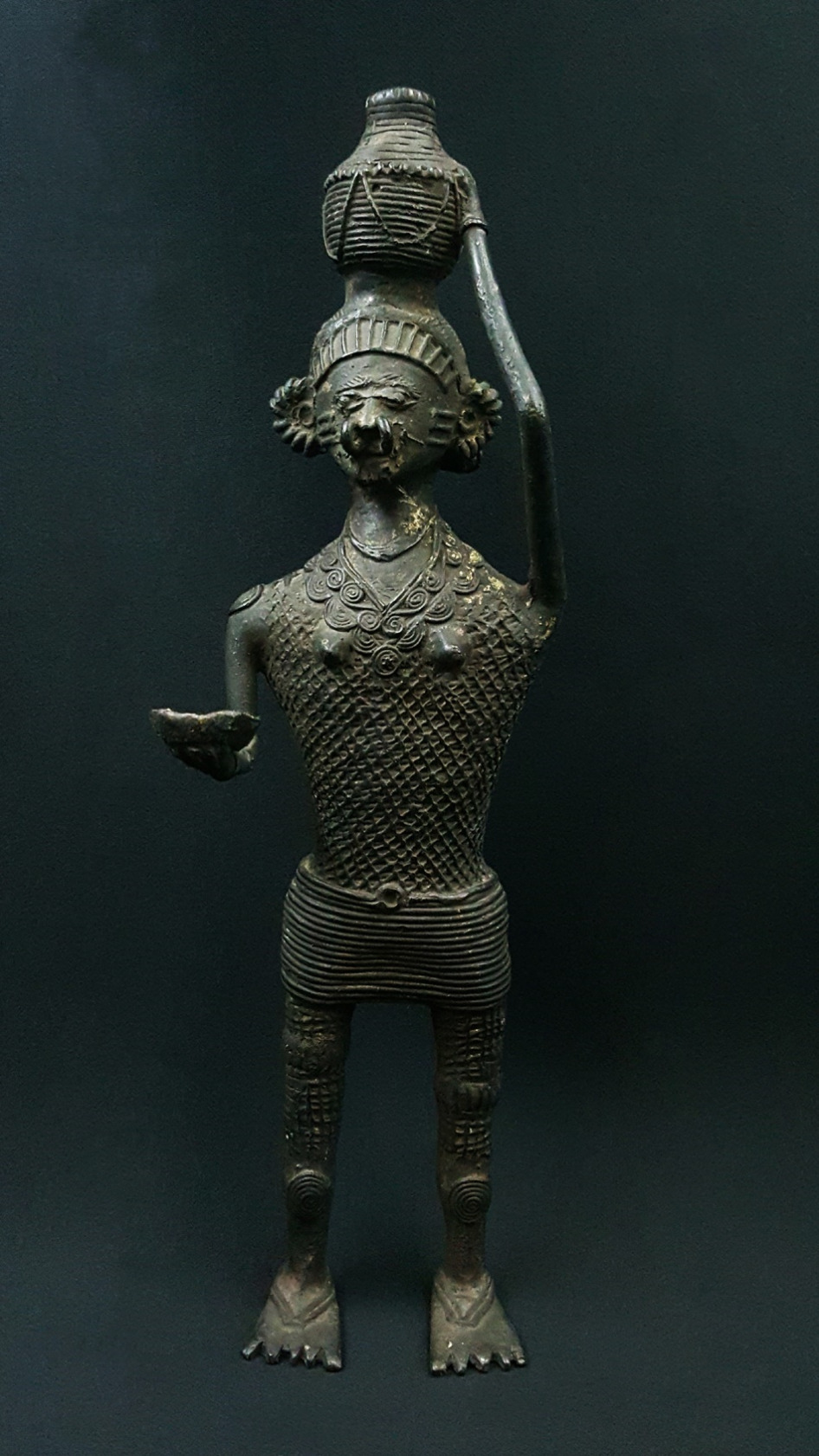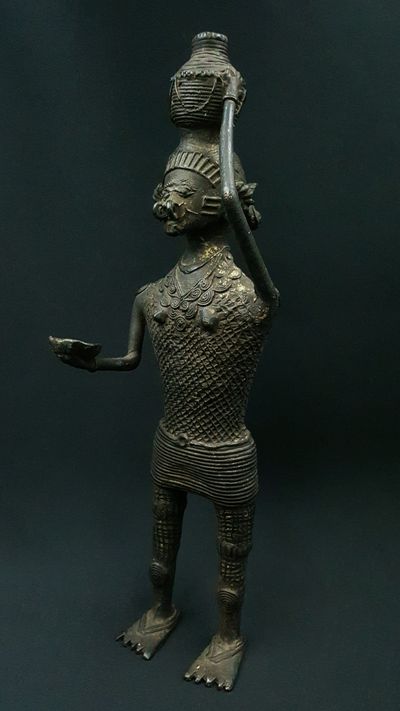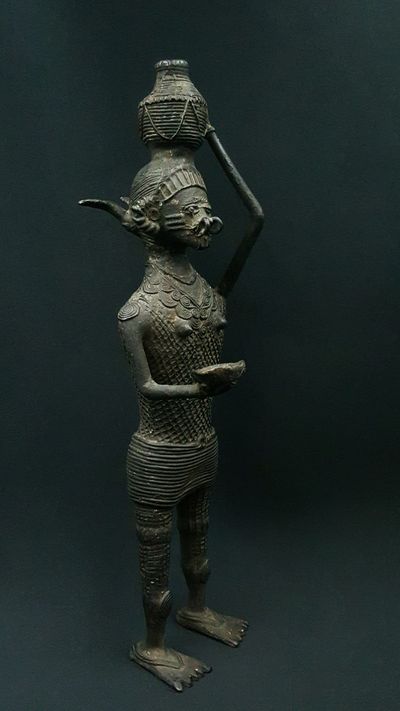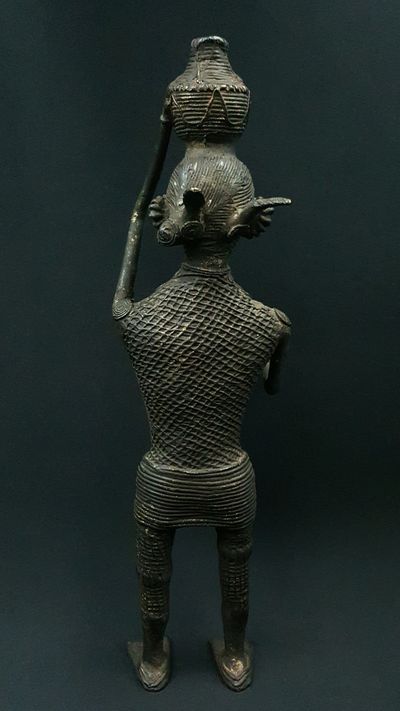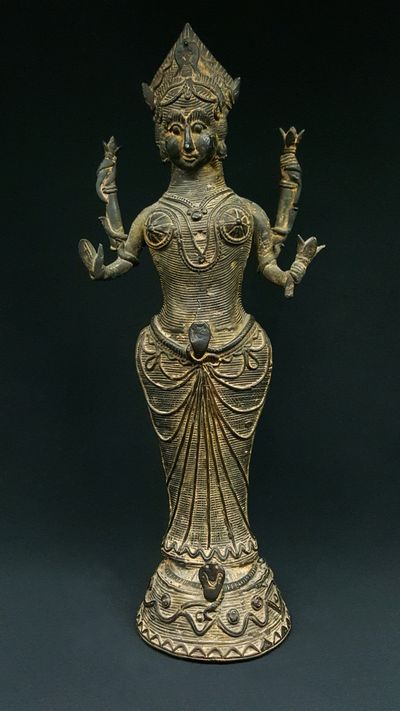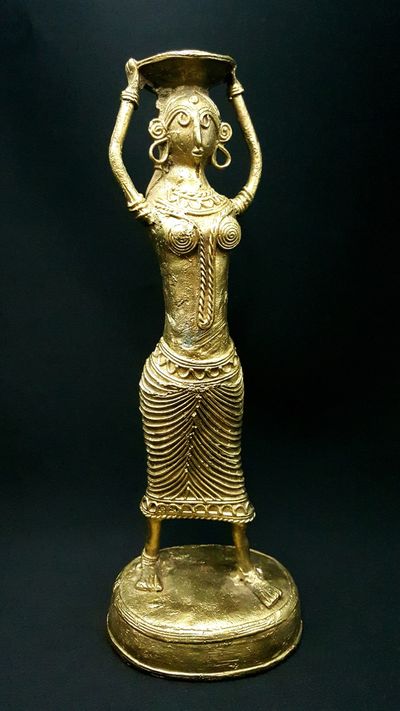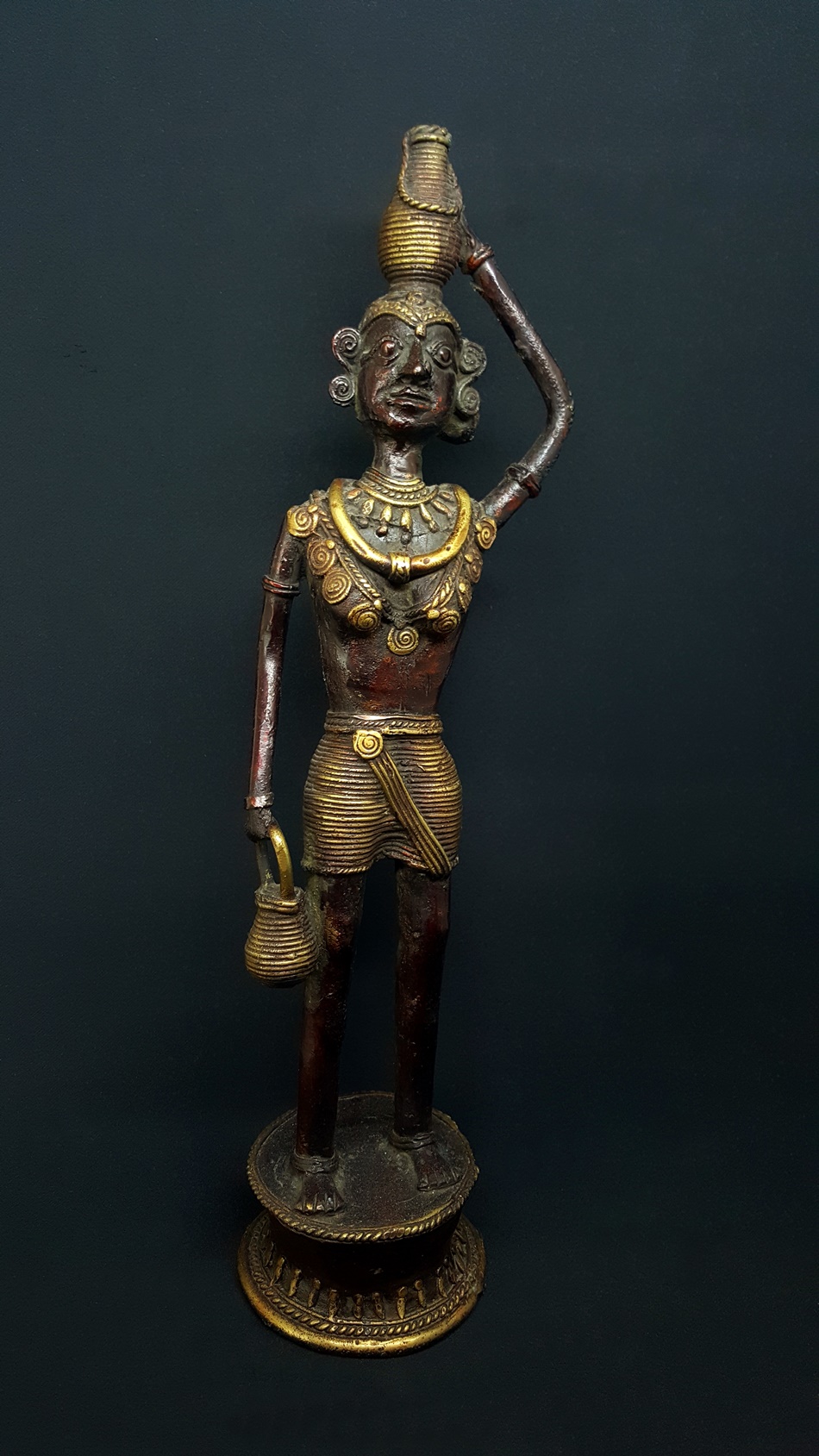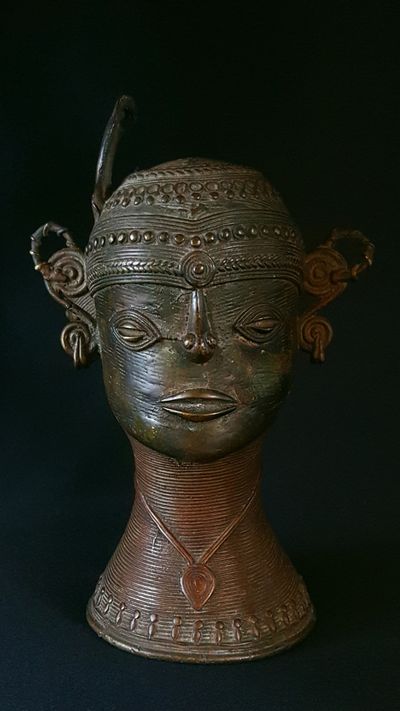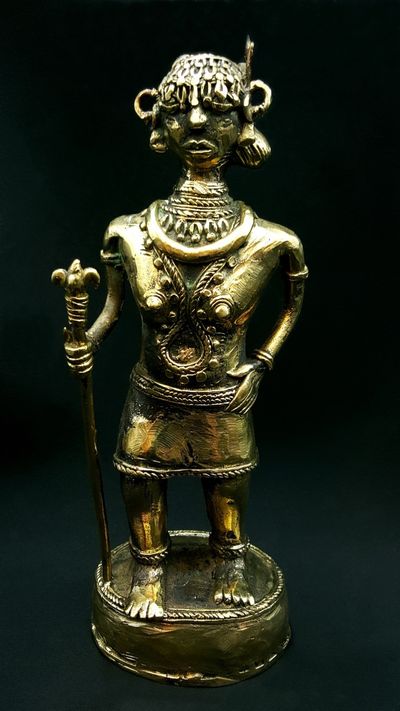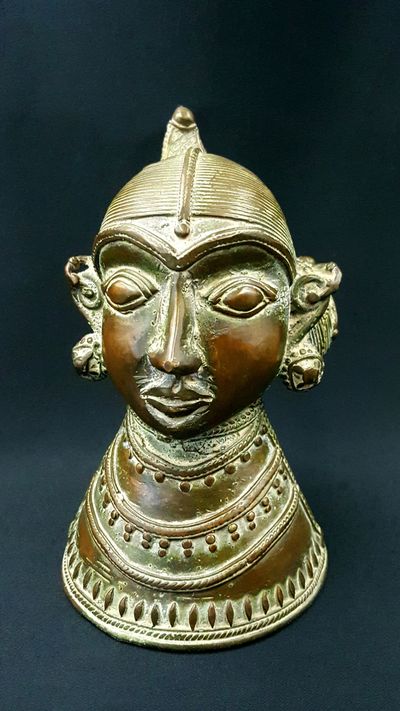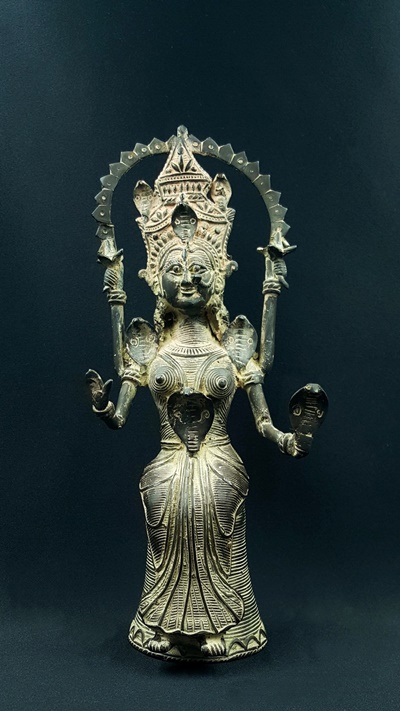Statue Femme Gond
Femme portant une jarre
€450.00
Cette rare statue Gond nous plonge au coeur du monde tribal : la simplicité des traits, des formes corporelles, la prédominance des bijoux émerveillent. En savoir plus...
Hauteur : 26 cm
Poids : 0,740 Kg
Art tribal
Technique de la cire perdue - Alliage cuivreux
Origine : Uttar Pradesh - Inde
Livraison gratuite UE, Norvège et Suisse
Description
L'art Gond
Les Gond sont le groupe tribal le plus important en Inde : ils sont installés en Inde dans plusieurs états, surtout dans le Madhya Pradesh. Le mot Gond vient de Kond qui signifie "Forêt de montagne".
La plupart ont gardé leur tradition (art culinaire, vestimentaire, fêtes...) et leur religion animiste mais certains se sont hindouisés.
L'art de la fabrication de statues chez les Gond se distingue par sa patine noire et un style et une iconographie propre : visage, traits et proportions.
L'art Dokra : un savoir millénaire dans la fabrication de statues
Cet art tribal Indien artisanal n'a pas changé depuis des millénaires (+ de 4000 ans) et la technique utilisée est toujours celle de la cire perdue : un modèle grossier en argile est réalisé puis recouvert de cire par l'artiste qui va lui donner sa forme définitive avec ses détails. L'ensemble est à nouveau recouvert d'un mélange argileux puis chauffé dans un foyer ouvert où un alliage cuivreux sera coulé. Voir Blog
Les objets produits par les artistes Dokra peuvent être de nature usuels : coupelle, bougeoir... des instruments de musiques (cuivres), ou bien artistiques tels que des bijoux, des animaux : chevaux, éléphants, tortues..., des statues d'hommes et femmes représentant des scènes de vies quotidiennes et des divinités hindous adoptées par les tribus : Ganesh, Lakshmi,...
Posture Debout, les pieds bien campés au sol, cette femme revient de la rivière avec sa jarre remplie d'eau. Le buste est droit, les genoux sont à peine dessinés, la main droite soutient la jarre tandis celle de gauche tient un bol dans un geste d'offrande. L'ensemble dégage une grande sobriété, une grande retenue caractéristique des Gonds : les détails du visage, des vêtements sont peu marqués, voire discrets.
Coiffure Chignon traditionnel sur l'arrière et coiffe de plumes. Le front est orné d'une large bandeau.
Bijoux Plusieurs colliers très discrets se succèdent en cascade sur son cou. Les boucles qui ornent ses oreilles en formant un magnifique arc de cercle et les boucles nasales captent notre regard.
